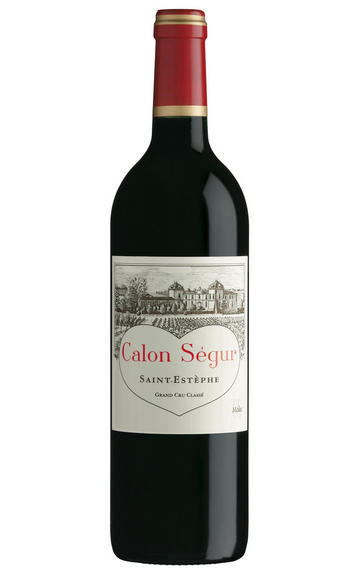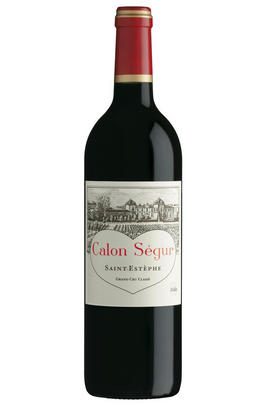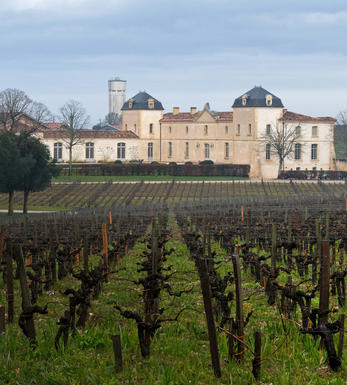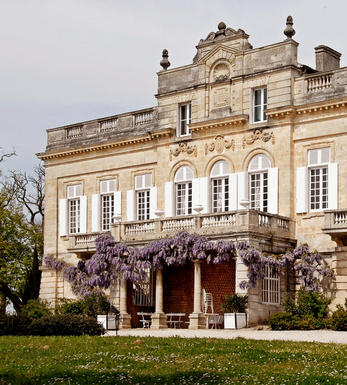
2016 Le Marquis de Calon Ségur, St Estèphe, Bordeaux

Critics reviews
Lisa Perrotti-Brown - 30/11/2018
Jancis Robinson - 19th April 2017
Jane Anson - Decanter, 3rd April 2017
About this WINE

Chateau Calon Segur
Château Calon-Ségur, the most northerly of all the Médoc Grand-Crus Classés, is the château with a heart on its label. That is because the former owner, Marquis de Ségur, though he owned such Estates as Lafite and Latour, he declared "My heart belongs to Calon". For the last century it has been owned by the Gasqueton family.
Calon-Ségur's 74-hectare vineyard, which is partly enclosed by a wall, is located just to the north of the village of St-Estèphe. The vineyards (Cabernet Sauvignon 65%, Merlot 20%, Cabernet Franc 15%) lie on up to 5 metre deep gravel beds mixed with sand and, in parts, limestone and clay.
The wines are fermented for 3 weeks in enamel-lined steel vats and are then matured in oak barriques (40% new) for 18 months. Recently, Calon-Ségur has hit form with notable successes in 1995 and 1996 and 2000. At its best, Calon-Ségur produces meaty and concentrated wines displaying excellent depth of fruit and superb length. It is classified as a 3ème Cru Classé.

Saint-Estèphe
Saint-Estèphe is the northernmost of the most important communes of the Médoc and borders Pauillac on its southernmost border, with only a gully and stream separates it from Ch. Lafite. To the north lies the Bas-Médoc.
Saint-Estèphe is defined by the depth of its gravel, which is ubiquitous but of varying depths and occasionally very shallow, when clay predominates. This keeps the soil cooler and wetter than its counterparts so that the wines can appear fresh in lighter vintages, but superbly successful in hot, dry years.
The best châteaux in the south of the commune have the deepest soil and the thickest gravel. Cos d'Estournel has an exceptional terroir with its vineyards being located on a south-facing ridge of gravel with excellent drainage.
Saint-Estèphe is the least gravelly of main Médoc communes and in the north of the commune the vineyards are heavier and more clay-based leading to a rustic style of wine being produced.
The wines can appear austere in youth with a discernable ferric note at some châteaux, but the best typically display good depth of colour, pronounced acidity an tannins in youth and are exceptionally long-lived. At their best, they are the equal of almost any Bordeaux. The well-regarded St Estèphe co-operative controls the production of about half the appellation.
Recommended Châteaux
Cos (Ch. Cos d'Estournel), Ch. Montrose, Ch. Calon-Ségur, Ch. Lafon-Rochet, Ch. Les Ormes de Pez, Ch. Beau-Site, Ch. Cos Labory, Ch. Phélan-Ségur

Cabernet Sauvignon Blend
Cabernet Sauvignon lends itself particularly well in blends with Merlot. This is actually the archetypal Bordeaux blend, though in different proportions in the sub-regions and sometimes topped up with Cabernet Franc, Malbec, and Petit Verdot.
In the Médoc and Graves the percentage of Cabernet Sauvignon in the blend can range from 95% (Mouton-Rothschild) to as low as 40%. It is particularly suited to the dry, warm, free- draining, gravel-rich soils and is responsible for the redolent cassis characteristics as well as the depth of colour, tannic structure and pronounced acidity of Médoc wines. However 100% Cabernet Sauvignon wines can be slightly hollow-tasting in the middle palate and Merlot with its generous, fleshy fruit flavours acts as a perfect foil by filling in this cavity.
In St-Emilion and Pomerol, the blends are Merlot dominated as Cabernet Sauvignon can struggle to ripen there - when it is included, it adds structure and body to the wine. Sassicaia is the most famous Bordeaux blend in Italy and has spawned many imitations, whereby the blend is now firmly established in the New World and particularly in California and Australia.


Buying options
Add to wishlist
Description
For the first time, some very young vines of Cabernet Sauvignon went into this blend. Dark, inky purple, the nose offers blackcurrant and dark fruits. On the palate, there is enormous concentration of dark fruit and the tannins finish softly, giving an overall impression of elegance.
Blend: Merlot 55%, Cabernet Sauvignon 45%
wine at a glance
Delivery and quality guarantee